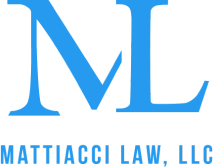Duty of Care is a cornerstone of personal injury law, establishing the responsibility an individual or entity has toward others’ safety, including Brain Injury Cases. When someone fails in this duty and causes harm, the basis for a negligence claim, specifically in Brain Injury Cases, is established.
In this article, we describe how to prove violations of the duty of care and win damages in brain injury cases. To succeed, we must prove four vital elements:
- Proving a duty of care exists
- Proving a breach of the duty of care
- Proving the breach caused injuries
- Proving the injuries caused the claims damages
Proving Duty of Care
Duty of Care is a fundamental principle in personal injury law. It refers to the legal obligation one party has to avoid causing harm to another. In a personal injury claim, establishing a duty of care is pivotal to proving negligence. If a person or entity has no duty of care, then a personal injury case cannot be brought against it.
In a brain injury case, establishing a duty of care requires showing that the defendant had a responsibility to act (or refrain from acting) in a certain manner to prevent harm to the plaintiff.
Duty of care is critical in personal injury law as it sets the standard of conduct expected of individuals in specific situations. Its breach, combined with causation and damages, forms the basis for a negligence claim.
For example, drivers have a duty of care towards others. If a motorist injures someone while driving, then a duty of care is assumed. The question then becomes whether the driver breached his duty of care.
Duty of Care Is Sometimes More Difficult to Prove
While proving a driver has a duty of care is simple in most cases, brain injuries from other types of accidents may present personal injury lawyers with more of a challenge in establishing the duty.
For instance, this may happen in a product liability case where the manufacturer contends that the duty of care is expunged because the plaintiff uses the product in a way other than intended. Because of misuse, the manufacturer no longer has a duty of care.
Consider a scenario where a plaintiff suffered a brain injury while using a treadmill at home. If the plaintiff used the treadmill as intended and suffered an injury, the manufacturer has a duty of care. However, what if he used it in a dangerous way against the intended use, such as by riding a bicycle on the treadmill as part of a challenge to make silly TikTok videos? The defense may argue its duty of care does not extend to such dangerous misuse of its product.
To counter this argument, the plaintiff and his legal team would need to demonstrate that the manufacturer had a duty of care to design and manufacture equipment that is safe for all foreseeable uses, not just when used exactly as instructed. In the case of riding a bicycle on a treadmill, this may be difficult.
On the other hand, if the plaintiff was using the product as intended but failed to engage a safety feature, the duty of care may still apply. The company should have foreseen that an injury could occur when the safety features are disabled, and it may be that enabling the features was unduly complicated and never properly explained in the product literature.
Proving a Breach of the Duty of Care
A breach of the duty of care in a personal injury case occurs when one party fails to exercise reasonable care in their actions or inactions, violating the legal obligation, or “duty they owe to the plaintiff. To establish a breach, the plaintiff must prove that the defendant’s conduct fell below the standard of care expected in the relevant incident.
The standard of care is defined as how a prudent person would act in the same situation. If the defendant’s behavior deviates from this norm, it may constitute a breach. In some cases, there may be statutory or regulatory standards that define the appropriate standard of care, such as traffic laws.
To illustrate, consider an auto accident case where a driver, distracted by texting, runs a red light and collides with another vehicle. The collision results in the other driver suffering a traumatic brain injury. Here, the distracted driver had a legal duty of care to operate his vehicle safely and obey traffic laws. His decision to engage with his phone while driving fell below the standard of what a prudent driver would do. As a result, he broke a traffic law, and the violation of this law caused the plaintiff’s injury.
A breach of the duty of care tends to be simpler to prove in an auto accident case than others because of the clear rules of the road. Likely, clear and convincing evidence of the breach exists through accident reports, witness statements, vehicle damages, red light cameras, and other proofs.
On the other hand, a breach of the duty of care in a medical malpractice case involving a brain injury may be less straightforward. The practitioner may claim he followed accepted medical practice. Proving he did not may require intensive investigation and expert witnesses.
Proving Causation
Establishing a breach of the duty of care in a personal injury case is a critical step, but it’s insufficient on its own. The plaintiff must also prove causation–that is, demonstrate that the defendant’s breach directly caused the harm or injury. Causation is also known as “cause-in-fact” or “actual cause”. Legal scholars summarized this concept through the phrase “but for the defendant’s actions, the plaintiff would not have been injured”.
Let’s take the example of a brain injury case where the driver breached the duty of care through distracted driving, running a red light, and crashing into another vehicle. The occupant of the other vehicle sustains a severe brain injury as a result of the crash.
In this case, proving causation requires showing that but for the distracted driver running the red light (the breach of duty), the crash would not have occurred, and the victim would not have suffered a brain injury (causation). Evidence such as accident reports, eyewitness testimonies, and expert opinions can be used to establish this causal link.
In contrast, consider a medical malpractice case where a doctor failed to diagnose a patient’s severe headache as an early sign of an aneurysm. The patient later suffers a brain aneurysm and files a lawsuit, alleging that the doctor’s failure to diagnose and treat the condition in a timely manner constituted a breach of duty.
Here, proving the breach of duty could be straightforward because medical standards require doctors to consider and rule out severe conditions when presented with certain symptoms, and ruling out an impending aneurysm as a cause of severe headaches qualifies.
However, proving causation might be more challenging. Even if the doctor had correctly diagnosed the aneurysm, it may have been impossible to prevent its rupture and subsequent harm. Therefore, the doctor’s breach of duty was not the cause of the injury.
Proving Damages
In personal injury lawsuits, after proving that the defendant’s negligence caused harm, plaintiffs must demonstrate that they suffered damages as a result of the injury. Damages refer to the losses of the plaintiff due to the defendant’s actions or inactions. They include financial, physical, and emotional harm.
Damages in a personal injury case compensate the injured party and restore them, as closely as possible, to the condition they were in before the injury. While no amount of money can erase the trauma and pain of an injury, financial compensation alleviates the burdens associated with medical expenses, lost wages, and reduced quality of life.
For example, imagine a scenario where a plaintiff suffered a brain injury in a car accident due to another driver’s negligence. After establishing that the other driver breached the duty of care and that this breach caused the accident and the resulting brain injury, the injured person must then provide evidence of the damages suffered.
This could include medical bills for hospital stays, surgeries, and ongoing therapies. If the person is unable to work due to the injury, he can also claim lost income. Further, if the brain injury resulted in long-term disabilities that prevent the person from returning to their former job, they might seek compensation for future lost earnings or loss of earning capacity. The person could also claim damages for pain and suffering, as a brain injury often results in significant physical discomfort and emotional distress.
In this example, the plaintiff must provide evidence to support each claim for damages. This evidence could include medical records and bills, wage statements, and testimony from medical and vocational experts. By linking the damages directly to the brain injury caused by the accident, the plaintiff can make a compelling case for compensation.
Potential Damages in Brain Injury Cases
Brain injuries can result in various damages, depending on the severity of the injury and its impacts on the individual’s life. Potential damages in a brain injury case may include:
- Medical Expenses: This covers immediate medical costs, such as emergency room visits, surgeries, hospital stays, and medications. Medical expenses also include future medical expenses related to the injury, like rehabilitation, physical therapy, occupational therapy, counseling, and necessary medical equipment.
- Lost Wages and Loss of Earning Capacity: If the injury forced the plaintiff to miss work or reduced his ability to earn future income, these losses are compensable.
- Pain and Suffering: Pain and suffering refers to the physical pain and emotional distress resulting from the injury. Since these damages are subjective and often difficult to quantify, expert testimony and the individual’s own descriptions of their pain and suffering are typically used as evidence.
- Loss of Enjoyment of Life: This covers losses in the individual’s quality of life, including the inability to participate in activities they enjoyed before the injury.
- Loss of Consortium: If the injury negatively affects the relationship between the injured individual and their spouse, compensation may be awarded for loss of companionship, affection, and sexual relations.
Establishing a breach of the duty of care is paramount to winning a brain injury lawsuit. However, it’s just the first step in the legal journey. Following this, the plaintiff must link the breach to harm and demonstrate tangible and intangible damages.
Each case presents unique challenges. A clear understanding of these principles and meticulous evidence-gathering help victims navigate the complexities of their cases. Compensation awarded as damages can help restore, to the maximum extent possible, the quality of life disrupted by the injury.
Consult with a Philadelphia Personal Injury Lawyer
Mattiacci Law specializes in brain injury cases. We are on the side of accident victims and fight for every penny our clients deserve. Contact Mattiacci Law for a free brain injury consultation.
Related Content: What Is a Personal Injury Claim in Philadelphia?
Categories
- Bicycle Accidents
- Brain Injuries
- Burn Injuries
- Bus Accidents
- Car Accidents
- Construction Accidents
- COVID-19
- Dog Bites
- Drunk Driving
- Injury Insurance
- Medical Malpractice
- Motorcycle Accidents
- Pain and Suffering
- Pedestrian Accidents
- Personal Injury
- Premises Liability
- Product Liability
- Rideshare Accidents
- Slip and Fall
- Truck Accidents
- Worker's Compensation
- Wrongful Death
Recent Posts
- How Much is a Shoulder Injury Settlement Without Surgery Worth in PA?
- What Are the Differences Between Truck and Car Accidents in Pennsylvania
- Are Personal Injury Settlements Considered Marital Property in PA?
- What Is the Average Accident Injury Settlement in New Jersey?
- Herniated Disc Car Accident Settlement Amounts in PA



